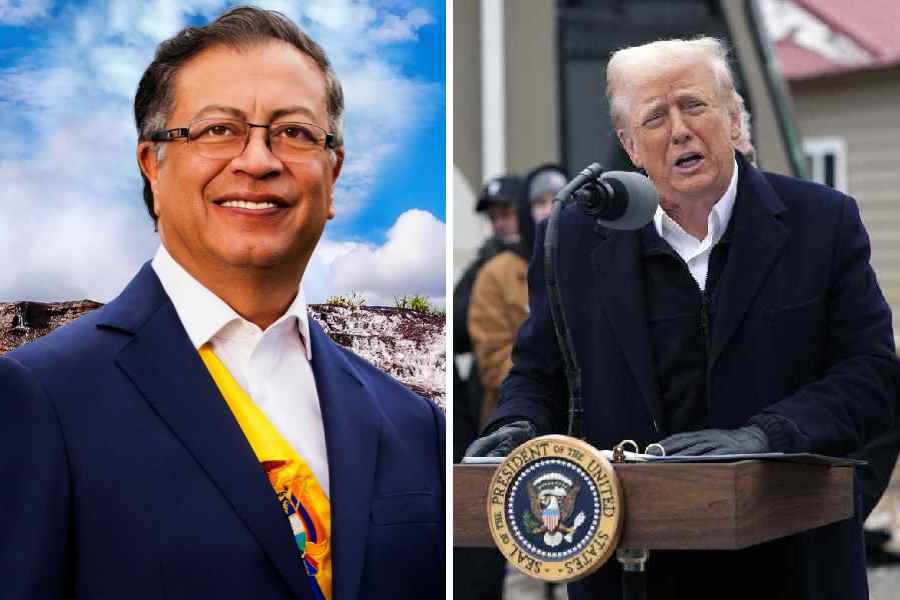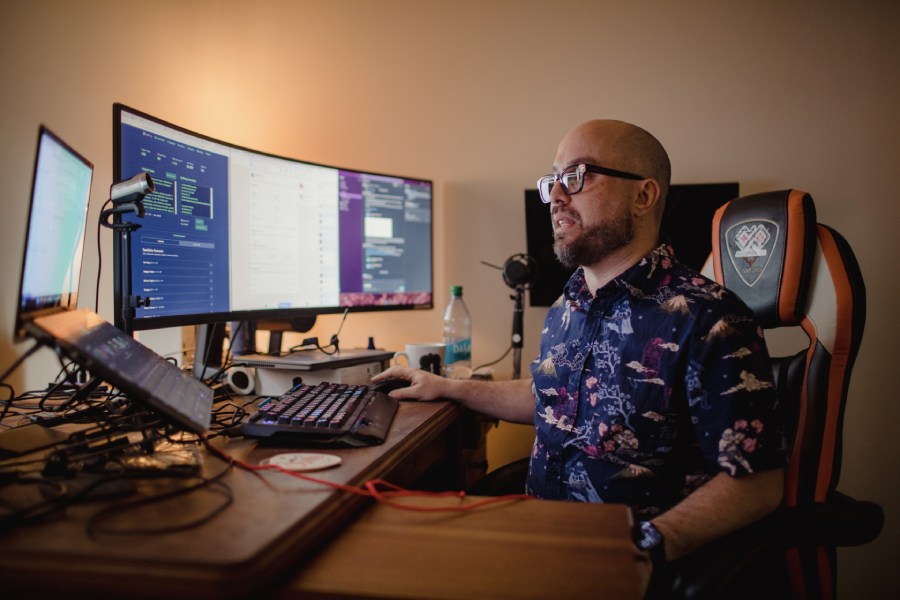There is something about watching a classical dance performance shorn completely of all accoutrements. Without the traditional music associated with it, minus the measured Natyashastra-approved facial expressions and free of its conventional aesthetics, ironically, the symmetry, beauty and balance of the form are starkly revealed. While this meets the contemporary sensibility, it is not without strange reverberations and a palpable sense of tension. Any dance form carries its unique cultural context, choreographic patterns, symbolism and history and tapping
into its roots can lead to the creation of compellingly simple, yet powerful, work.
The annual, three-day, immersive Manifest Dance-Film Festival at Pondicherry was vibrant with several interesting live performances, one of which was Gururaju’s experiment with Kuchipudi (picture, left). As the dancer’s body moved with a great deal of restraint, he was able to distil the very underpinnings of his form in a penetrating, inward-looking re-examination of it. Infused with a modern energy, the work offered a dip into the essence of Kuchipudi in its earthiest and most virtuosic configuration.
The process was a challenging one, with an extra layer of complexity added by a Hindustani-style jugalbandi with the tabla in a soundscape designed by the festival director, Ashavari Majumdar. Gururaju was able to inform the piece with a sense of purpose and clarity.

A moment from Plastis
A contemporary Flamenco performance by the Israeli dancer, Naya Binghi, also sought to touch the core of the form. Binghi’s bold investigation, like Gururaju’s, allowed her to inhabit the form with her own sensibility and an awareness of freedom within its structure.
An incredibly moving narrative, Plastis (picture, right), was performed by Puneet Jewandah, who is also its creator. The piece — presented right after the screening of a dance film of the same name directed by Anmol Khurana based on the choreography — was a vivid exploration of the climate crisis through persuasive storytelling. With a plastic creature as its protagonist, the work spoke about the dynamics of the relationship between plastic and the earth. It began with the practical realisation that due to certain unique properties, the material is useful and versatile. But the moment of reckoning comes with the insight that it jeopardises the future of the planet. This results in rejection, throwing the plastic creature into an existential rut. If the film allowed the dancer to actually roll in mud and water, the black-box presentation, perfectly juxtaposed with the screen version to bring out the comparisons, registered great urgency in the way it represented the agony of the plastic in its fight with nature.
It is at this point, however, that the story takes a startling turn. In contact with the elements, the plastic entity becomes one with the natural world. It connects with the environment and is reborn as an artificial flower. With a positive message about recycling, redemption and sustainability, the work urges viewers to reconsider their attitude to plastic and to give back to the environment what has been taken from it.
The festival also featured an improvised group performance by AV Improv Lab choreographed by Marco Novara. Responding to Bill Vine’s dance film, And We Might Briefly Resonate, the group of dancers created moments of intense action echoing the film’s movement. It offered the artistes new ways of understanding dance and bodies, while pushing the boundaries of individual response to encompass those of the group.











